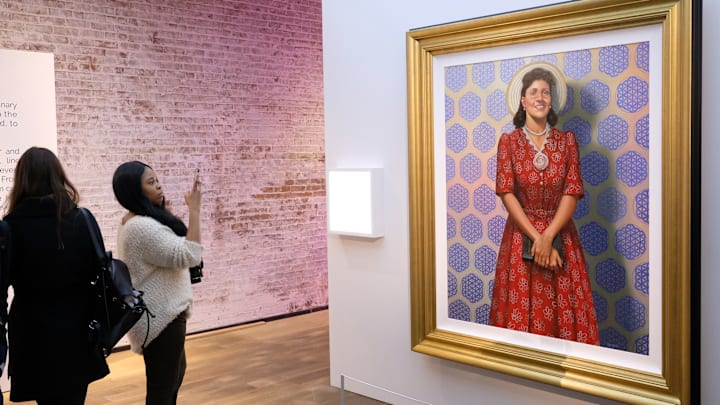The legacy of Henrietta Lacks is a complicated one. In the latter half of the 20th century, medical science used her immortal cancer cells to help develop treatments and therapies for a variety of ailments. While those breakthroughs have helped millions, the samples were taken without her consent. White doctors at Johns Hopkins Hospital didn’t believe they needed to ask before appropriating the tissue of the young Black woman; it took decades and a bestselling book about her story before Lacks was properly acknowledged by name.
Her significance to medicine is such that a statue is set to be erected in her hometown of Roanoke, Virginia. According to ABC, the bronze sculpture will be crafted by Larry Bechtel, with preliminary art sketched by Bryce Cobbs. Lacks’s grandson, Ron, was on site for the unveiling of the drawing in Roanoke this week.
“This is an honor and a privilege to be here in Roanoke with my father, Lawrence Lacks, Henrietta's oldest and only living child,” he said. “This historical moment, occasion, has been a long time coming.”
Born in Virginia in 1920, Lacks and her husband David Lacks moved to Baltimore during World War II to seek employment. After developing symptoms of what would be diagnosed as cervical cancer, she sought treatment at Johns Hopkins, one of few top hospitals treating Black patients in the Jim Crow era. A surgeon took tissue samples from her during a procedure, effectively making Lacks an unwitting donor of her cancer cells.
Instead of dying quickly, as cell samples usually do, Lacks’s cells multiplied and demonstrated unprecedented durability, which led to them being reproduced in the medical community and used in a variety of scientific research. The “HeLa” cells, as they were labeled on test tubes, have been key in developing vaccines as well as treatments for AIDS, Parkinson’s disease, and cancer.
Despite the significant profits derived from these treatments, the Lacks family was never informed about—or shared revenue from—Henrietta Lacks’s part in global medical research. Lacks died in 1951, her name was not disclosed until 1971, and her story was not widely known beyond the medical community until Rebecca Skloot’s bestseller The Immortal Life of Henrietta Lacks was published in 2011.
Plans are for the statue to occupy Henrietta Lacks Plaza, a space downtown that was previously home to a statue of Confederate General Robert E. Lee. That sculpture was removed in 2020.
[h/t Smithsonian]
